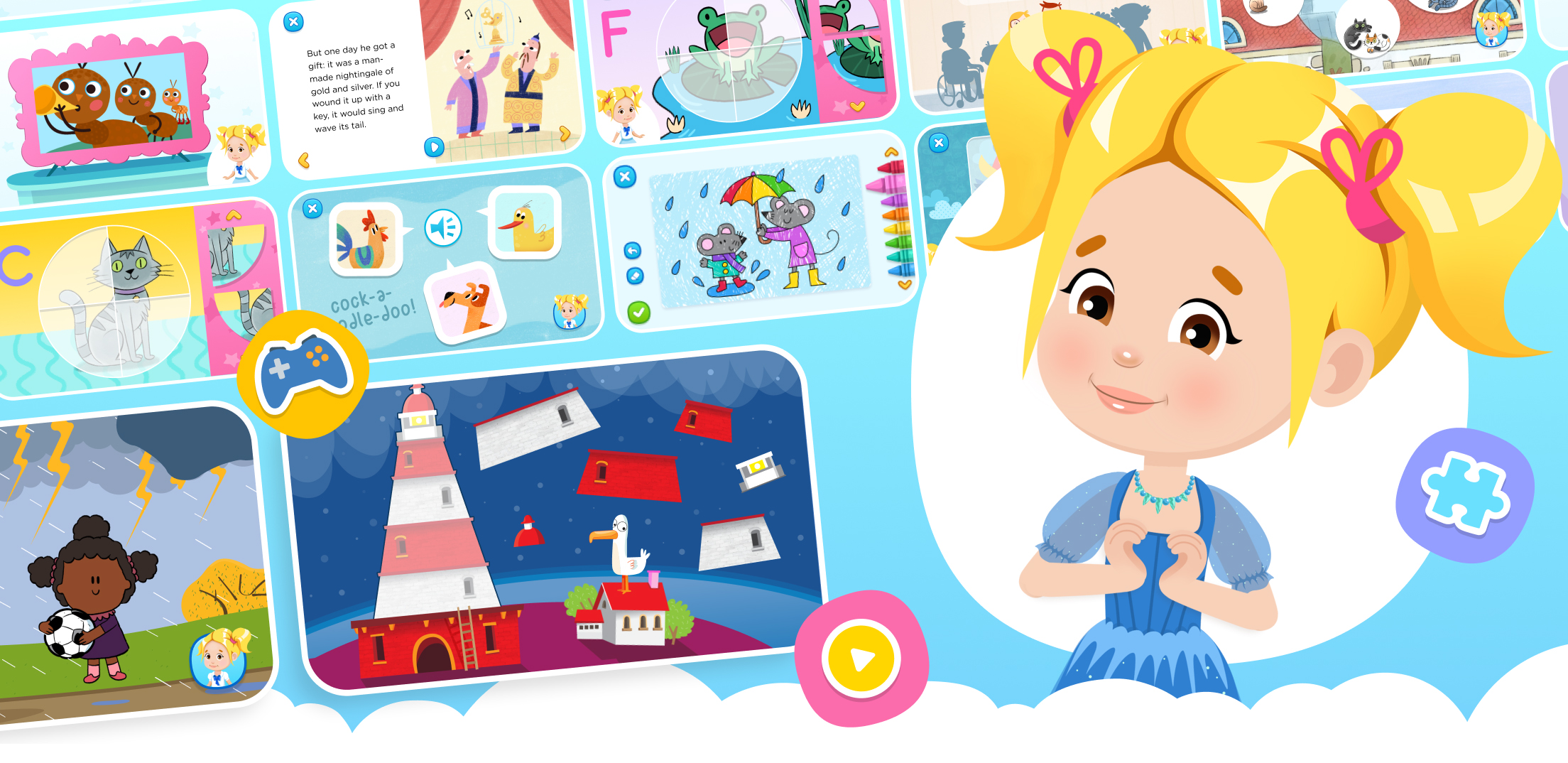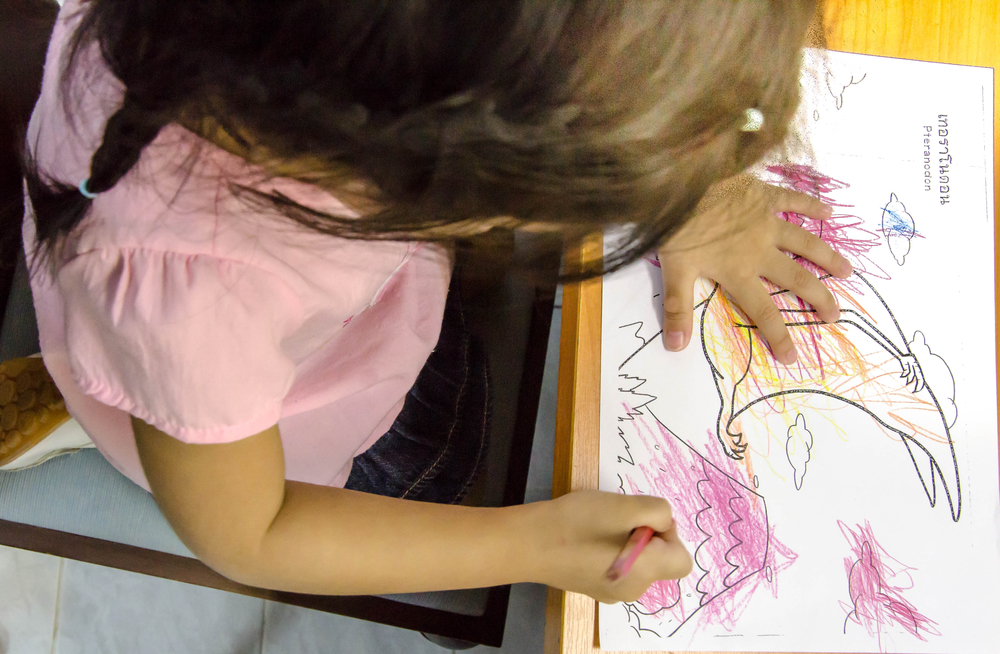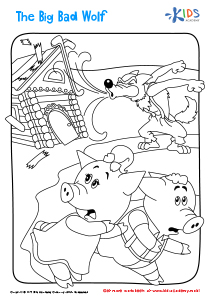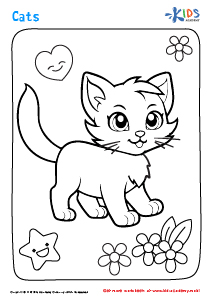Feelings and Emotions Worksheets for Ages 5-8
4 filtered results
-
From - To
Help young learners explore and understand their emotions with our Feelings and Emotions Worksheets for Ages 5-8. Designed to be engaging and educational, these worksheets use fun activities like coloring pages, matching exercises, and simple quizzes to teach kids how to identify and express different emotions. Perfect for classroom use or at-home learning, our resources support emotional development and literacy. Each worksheet is carefully crafted to be age-appropriate, fostering both social skills and self-awareness in a fun and interactive way. Encourage your child to embrace their feelings with our comprehensive, kid-friendly printables.
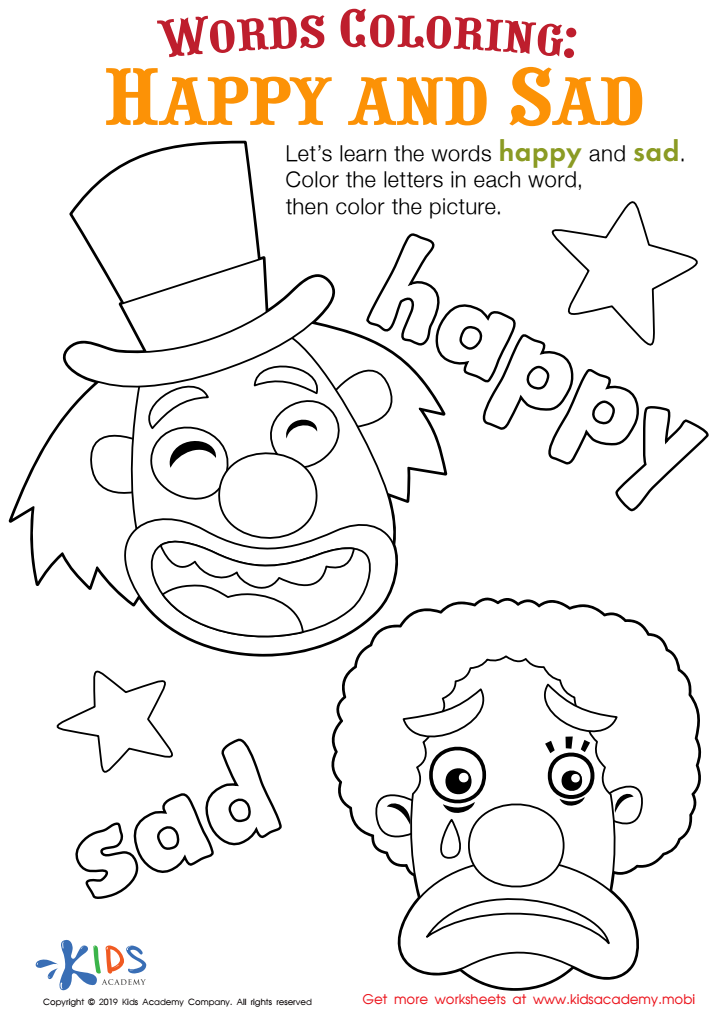

Happy and Sad Words Coloring Worksheet
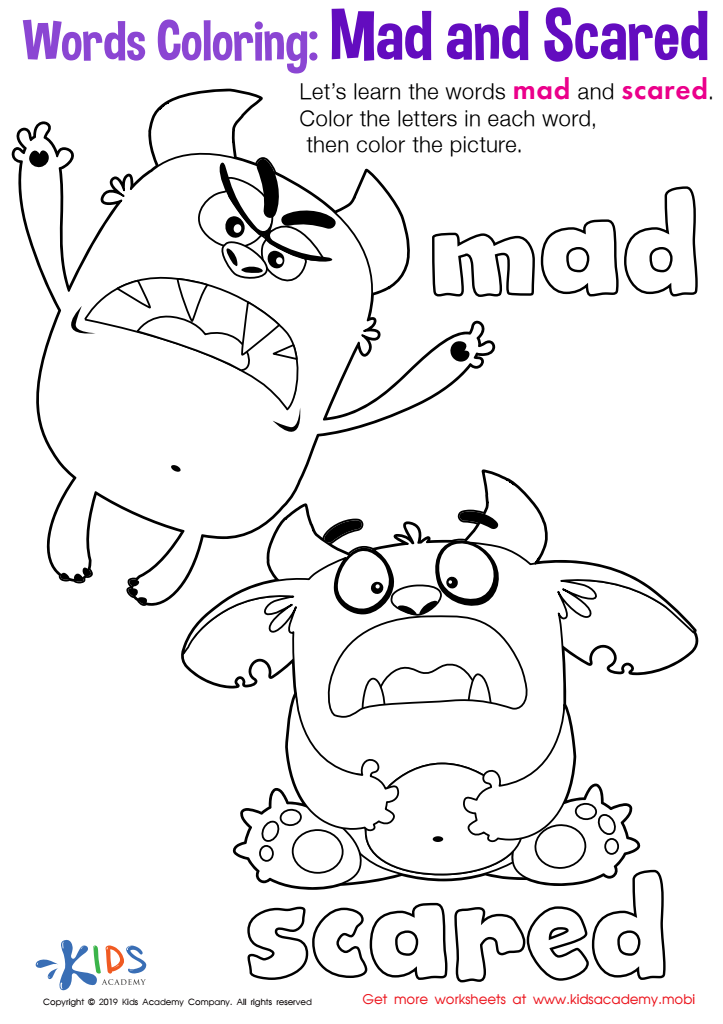

Mad and Scared Words Coloring Worksheet
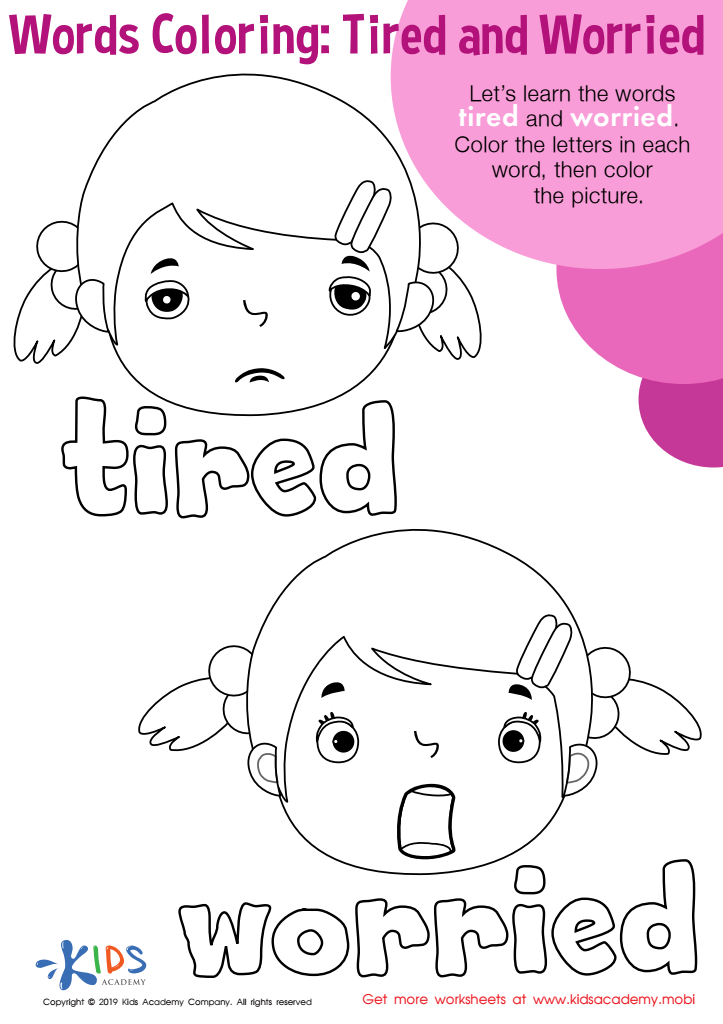

Tired and Worried Words Coloring Worksheet
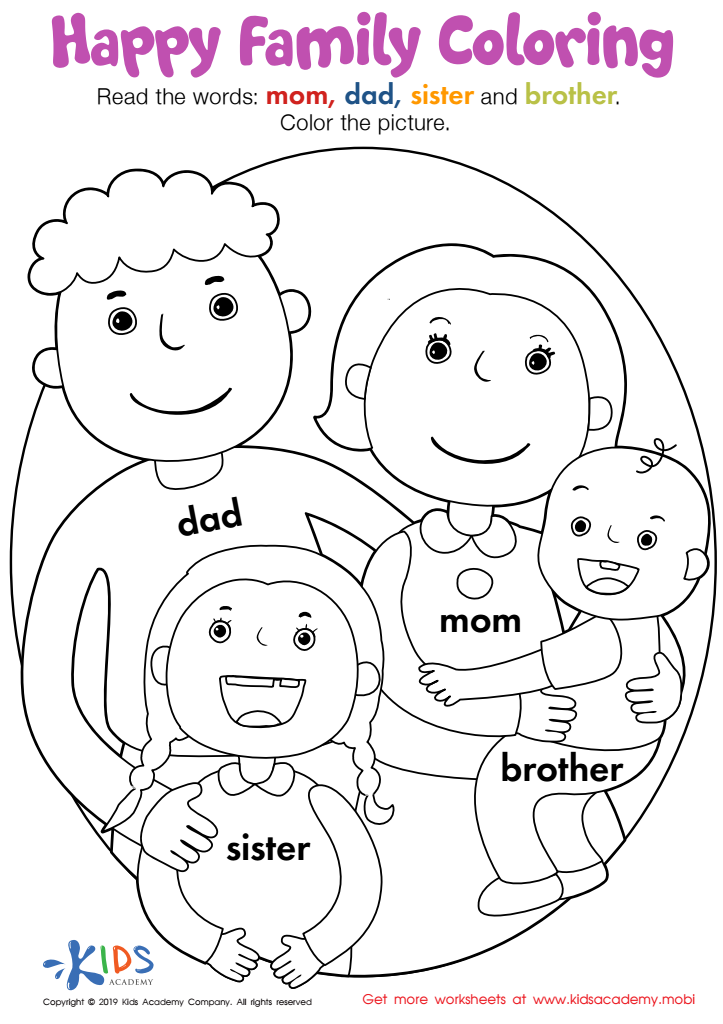

Happy Family Coloring Worksheet
Parents and teachers should care deeply about feelings and emotions in children ages 5-8 because this period is foundational for emotional development. At this stage, children are beginning to understand and express a wide range of emotions, making it crucial for their mental health and social growth. Recognizing and validating feelings helps children develop emotional intelligence—a key factor in forming healthy relationships, solving problems effectively, and coping with challenges.
By caring about children’s feelings, adults can create a safe space for kids to express themselves without fear of judgment. This nurtures trust and open communication, enabling children to share their experiences and seek support when needed. Helping kids name and understand their emotions empowers them with the vocabulary to articulate how they feel, reducing frustration and misunderstanding.
Moreover, teaching children about emotions equips them with strategies to manage stress and resolve conflicts peacefully, skills that are valuable throughout life. Emotional awareness is linked to better classroom behavior, improved focus, and greater academic achievement. In essence, paying attention to children’s feelings and emotions lays the groundwork for healthy self-esteem and lasting emotional resilience, contributing to their overall well-being and successful future outcomes.

 Assign to the classroom
Assign to the classroom
